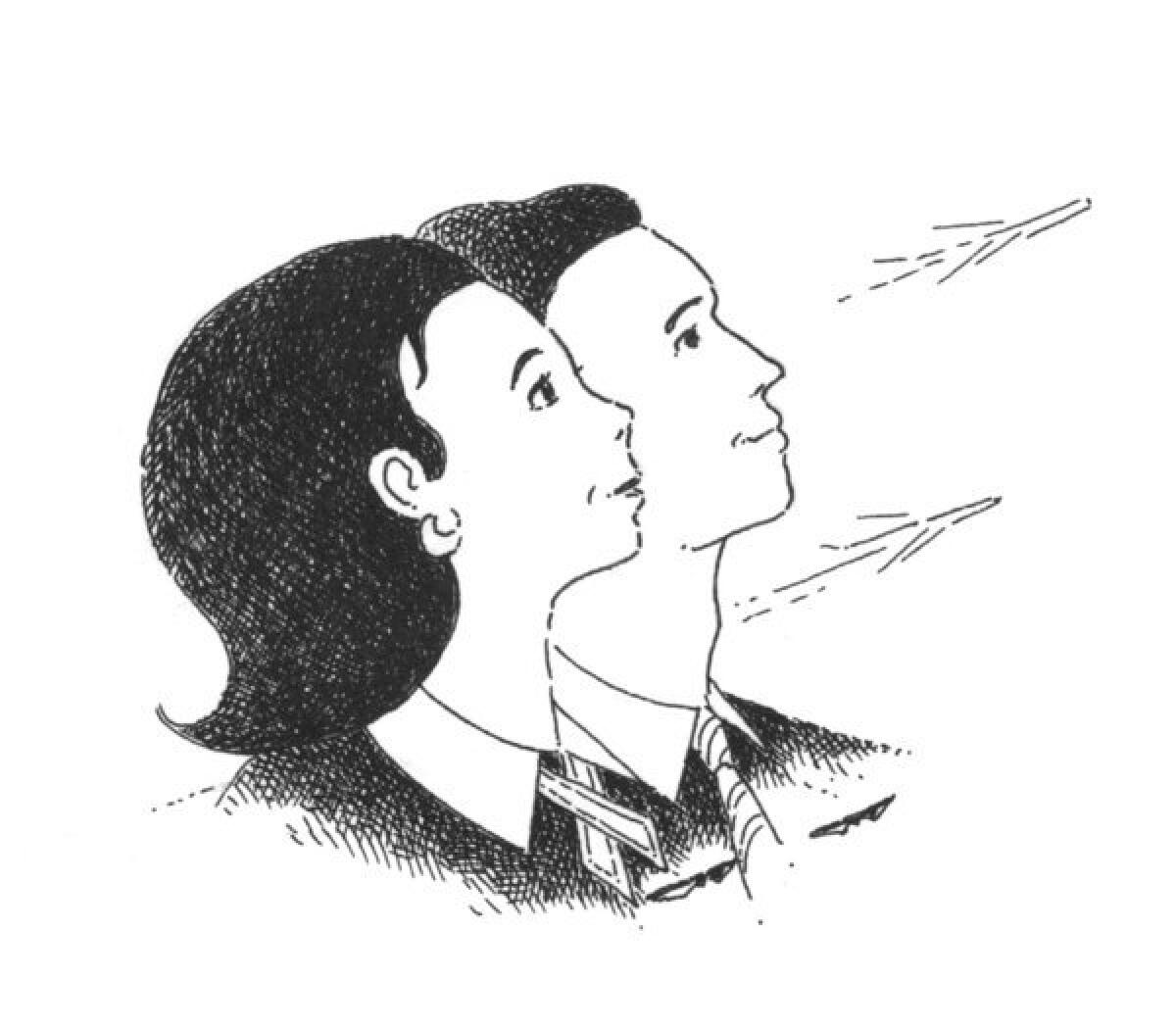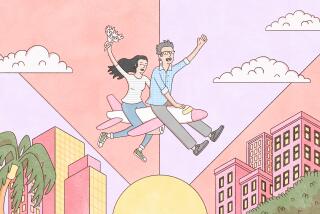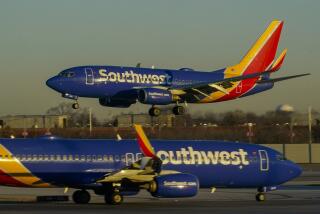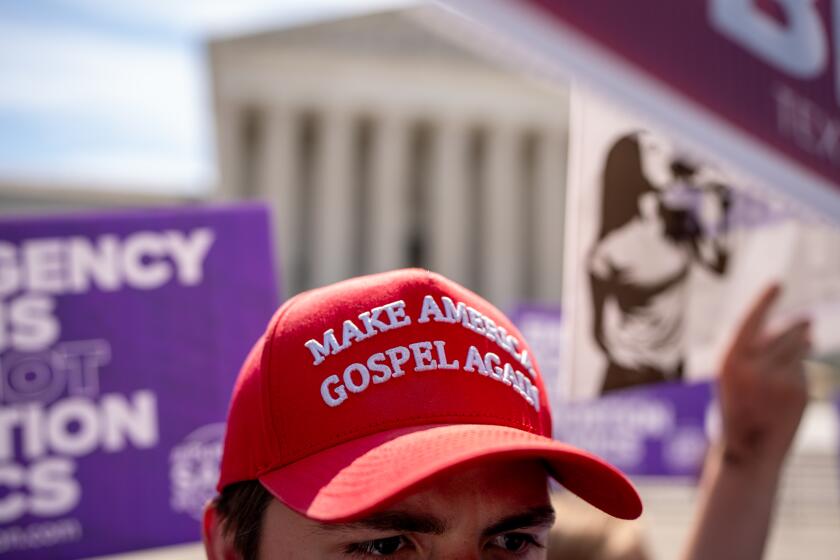Flying the less-friendly skies

One in an occasional series on the changing nature of work.
Long ago — I’m talking in the 1960s — “stewardesses” were taught how to walk up stairs in heels and how to blow out a match after lighting a passenger’s cigarette. They were issued pillbox hats and little white gloves. Their glamour was a big part of the allure of airline travel.
But when passengers reminisce about those good old days, I remind them that barely anyone could afford to fly then, and then I might point out a colleague and say, “Remember the stewardesses back then, the ones in hot pants and go-go boots? Well, there’s one right over there. Still flying.”
Hard to believe, I know, but these days flight attendants are allowed to grow old and gain a little weight. As long as we can still fit through the exit window, buckle our seat belts without an extension and, most important, pass the yearly training, we can fly as long as we want.
I’ve been a flight attendant for a major carrier for 18 years, and I’ve seen a lot of changes in that time. But nothing changed my job more than 9/11. Since then, at yearly training we focus more on safety and security than service. We’re taught karate. We talk about throwing hot coffee at lunging terrorists and other things I’m not at liberty to discuss. “This is not what I signed up for,” I’ve often heard veteran flight attendants mumble during class.
At the same time, with turmoil in the industry and rising fuel costs — and, more recently, with the recession — airlines are more focused than ever on the bottom line. Flight attendants have taken multiple pay cuts. We’ve watched days grow longer and layovers grow shorter. Sometimes, with only the minimum required eight hours behind a hotel room door, it feels like there’s not enough time to eat, sleep and shower before we’re back in the air.
Because airlines have cut back, flights are staffed with minimum crews. That’s why we no longer roam the aisles during boarding helping passengers the way we used to. Things passengers took for granted, like pillows, blankets and free meals, have disappeared. Back in the day, it wasn’t unusual for stewardesses to get manhandled in the aisle. It still isn’t, but now it happens more out of anger than attraction.
But even though a lot has changed over the years, some things remain the same: bags get lost, delays happen and the no-smoking sign is still illuminated when the seat belt sign comes on, even though smoking has been banned on all U.S carriers since 1988. Red is still the preferred choice of lipstick for flight attendants, and smiling is still a big part of the job.
One of the things that keeps me on the job is that smiling isn’t difficult most days. Just when I think I’ve seen it all, someone brings an emotional-support dog wearing a tutu into first class. It’s harder to smile, though, when somebody’s complaining that the light on my credit card machine is keeping him awake on a red-eye flight, or while arguing with passengers about turning off electronic devices during boarding.
If the FAA would start allowing electronic devices to be used during takeoff, it would sure make my job a lot easier. I spend way too much time asking people to turn off their phones, iPads, iPods and Kindles. And by off, I mean all the way off, not hiding-it-under-your-thigh off.
I realize that air travel has more rules than it used to, and that simply getting into the airport and onto the plane is more stressful. And I know passengers don’t appreciate having to pay for checking bags and for in-flight meals. But try to remember that your flight attendant didn’t make the rules.
When I started this job, Facebook and Twitter didn’t exist. Now everybody’s an undercover investigative reporter. Passengers are more inclined to document an event than to offer help — or even to get into their brace position during an emergency landing.
Me, I wish I could document a few of the things I see on a daily basis, like why it’s never a good idea to multitask during boarding. Yes, I’m talking about, among other things, the guy on the phone attempting the one-arm swing. I have yet to see a passenger get a bag into a bin that way, especially when it’s the size of an elephant. But that won’t stop him from trying again and again, as everyone behind him waits to get to their seats.
But people are also the best part of my job. For every jerk who has had a few drinks too many, there’s a planeful of wonderful passengers with interesting stories to share. I never know whom I’m going to meet next: a World War II veteran who wants to dance in the aisle, a monk carrying a Starbucks coffee and sporting Asics running sneakers, or a celebrity rolling a bag covered in so much duct tape it’s impossible to make out the designer label. Recently I served an ex-New York mayor eight diet Cokes on a two-hour flight. Another day, a well-known comedian asked for a doggy bag for two leftover first-class shrimps. I even met my husband in the air, flying from New York to Los Angeles.
If I’ve learned anything from 18 years as a flight attendant, it’s that my job will continue to change — and the changes won’t necessarily be for the better. But I also know that the best parts of my job will remain. Flying is in my blood and soul. It’s a lifestyle, not just a job, and each time I walk on a plane, a new adventure awaits.
Heather Poole is the author of “Cruising Attitude: Tales of Crashpads, Crew Drama, and Crazy Passengers at 35,000 Feet.”
Find additional essays in the Labor Pains series. Has your work changed in recent years? Tell us about it by email at [email protected] or on Twitter at #latlaborpains.
More to Read
A cure for the common opinion
Get thought-provoking perspectives with our weekly newsletter.
You may occasionally receive promotional content from the Los Angeles Times.










